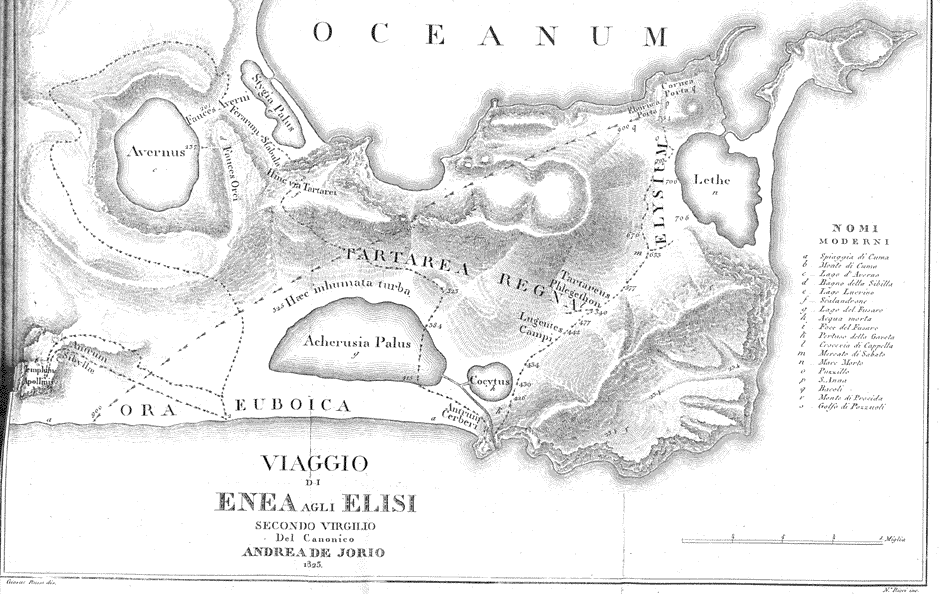I’ll keep this one short and sweet. The Neath = Literally Hades
Exhibit 1: Aenas’ (Virgil) journey through parts of Hades. Note that Avernus, Lethe, Acherusia Palus etc. are all Lakes or Rivers. The way it’s drawn makes it seem like they are islands.
Exhibit 2: The above map tilted 90 degrees counterclockwise, then mirrored and lined up with the first section of the Sunless Sea map. Note that in Sunless Sea, Lakes and Rivers have become landmasses, while Landmasses have become zee:
Exhibit 3: An artist’s Rendition of the entirety of Hades. We know little of the exact geography of Hades, so I’d recommend you to look at some other pictures on google. Note that Fallen London is in the middle section of Hades, not at an edge. Keep in mind that East/West is reversed, since the above map is mirrored, and that Land = Sea. We’re actually sailing West (Go Weeest) in Sunless Sea, not East.
Exhibit 4: An artist’s (cough) preliminary comparison between the extended Neath and Hades. Question-mark means that it seems likely based on name/location/gut feeling but isn’t set in stone in any way (edit: read: Wild speculation). Place names without question mark are places I’m >90% certain are correct (edit: Correct as in "there is some relationship). Note that Divine figures in Greek Mythology (and in most ancient mythology in general) generally exist as some geographical feature and as a typical "God" simultaneously. For example "Gaia" = Earth, while Gaia is also some walking, talking, figure. Similarly, Hekate = A landmass in Hades, as well as the triumvirate Goddess of the Moon, Magic, Crossroads etc.
edited by Cantankerous Captain on 5/11/2017



